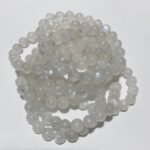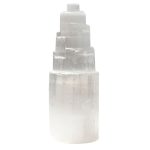Introduction:
In the realm of crystals, size does matter. Big crystals, often referred to as “mega crystals” or “monocrystals,” have captivated scientists, collectors, and industrialists alike due to their remarkable properties and wide-ranging applications. This article explores the fascinating world of big crystals, delving into their characteristics, applications, and the advantages they hold over their smaller counterparts.

Size Matters: Big Crystals VS Smaller Crystals
The primary distinction between big crystals and smaller crystals lies in their size. Big crystals typically exceed several millimeters in length, while smaller crystals are usually measured in microns or nanometers. This difference in size has a profound impact on their properties and suitability for various applications.
| Feature | Big Crystals | Smaller Crystals |
|---|---|---|
| Size | >1 mm | |
| Growth Rate | Slow | Fast |
| Purity | High | Lower |
| Optical Properties | Excellent | Good |
| Mechanical Properties | Strong | Weaker |
| Applications | High-tech devices, laser components | Jewelry, paints |
Applications of Big Crystals
Big crystals find applications in a diverse range of industries, including:
- Electronics: High-purity silicon crystals are used in semiconductors and solar cells.
- Optics: Laser crystals generate high-powered laser beams for medical and industrial applications.
- Medicine: Artificial sapphire crystals are used in medical implants and surgical instruments.
- Jewelry: Large, flawless crystals of quartz, amethyst, and other gemstones are highly sought after.
- Decorative Arts: Big crystals are used in sculptures, chandeliers, and other decorative items.
Advantages of Big Crystals
Compared to smaller crystals, big crystals offer several advantages:
- Higher Purity: The slow growth rate of big crystals allows impurities to be excluded, resulting in higher purity material.
- Enhanced Optical Properties: The larger size of big crystals enables them to exhibit superior optical properties, such as higher refractive index and lower light scattering.
- Improved Mechanical Properties: The extended atomic bonding in big crystals leads to increased mechanical strength and durability.
Common Mistakes to Avoid
When working with big crystals, it is important to avoid certain common mistakes:
- Improper Handling: Big crystals are delicate and can be easily scratched or broken if not handled carefully.
- Incorrect Cleaning: Using harsh chemicals or abrasive cleaners can damage the crystal’s surface.
- Exposing to Extreme Temperatures: Sudden changes in temperature can cause thermal stress and fracture the crystal.
Why Big Crystals Matter
Big crystals are crucial for advancing technology and innovation in various fields. Their unique properties enable the development of next-generation devices and materials that push the boundaries of human ingenuity.
- Advancements in Electronics: High-purity silicon crystals are essential for Moore’s Law, which predicts the doubling of transistor density in integrated circuits every two years.
- Medical Innovations: Artificial sapphire crystals play a vital role in medical implants, offering superior biocompatibility and durability.
- Scientific Discoveries: Large laser crystals are used in particle accelerators and other scientific instruments that probe the depths of our universe.
Benefits of Big Crystals
The benefits of using big crystals are numerous:
- Enhanced Performance: Big crystals enable better performance in electronic devices, lasers, and other applications due to their superior properties.
- Increased Efficiency: The larger size of big crystals reduces losses and improves energy efficiency in various devices.
- Improved Longevity: The durability and strength of big crystals increase the lifespan of devices and components.
FAQs
- How are big crystals grown?
- What are the challenges in growing big crystals?
- How are big crystals used in electronics?
- What are the potential applications of big crystals in the future?
- How can we improve the quality of big crystals?
- What are the common mistakes to avoid when working with big crystals?
- How do big crystals compare to smaller crystals in terms of performance?
- What are the benefits of using big crystals instead of smaller crystals?
Future Trends and Improvement
The future of big crystals is bright, with ongoing research and development leading to new applications and improvements.
- Advanced Growth Techniques: New methods are being developed to grow even larger and higher-quality crystals.
- Novel Applications: The exploration of unconventional applications for big crystals, such as quantum computing and energy storage, is gaining traction.
- Multifunctional Crystals: Scientists are designing crystals with multiple functionalities, combining optical, electronic, and magnetic properties.
Case Study: Sapphire Crystal Growth
Problem: Growing large, high-purity sapphire crystals for laser applications is challenging due to impurities and defects.
Solution: Researchers developed a novel growth technique using a modified Czochralski method, which resulted in the production of sapphire crystals with exceptional purity and optical properties.
Conclusion:
Big crystals are playing an increasingly important role in shaping the future of technology and innovation. Their unique properties and wide-ranging applications make them indispensable for advancing our understanding of the world and creating new possibilities. As research and development continue to push the boundaries of crystal growth, we can expect even more remarkable applications and benefits from these fascinating materials.




























